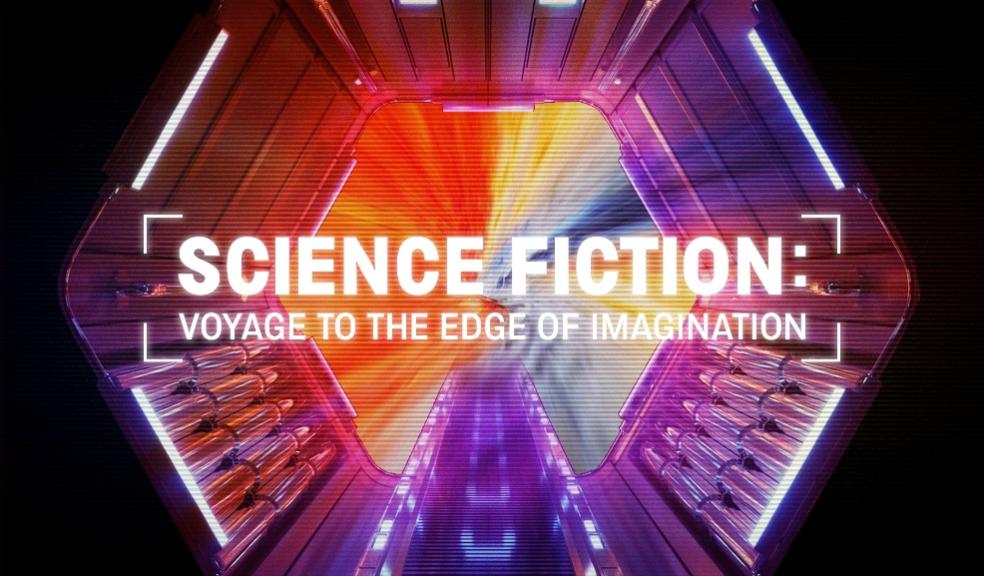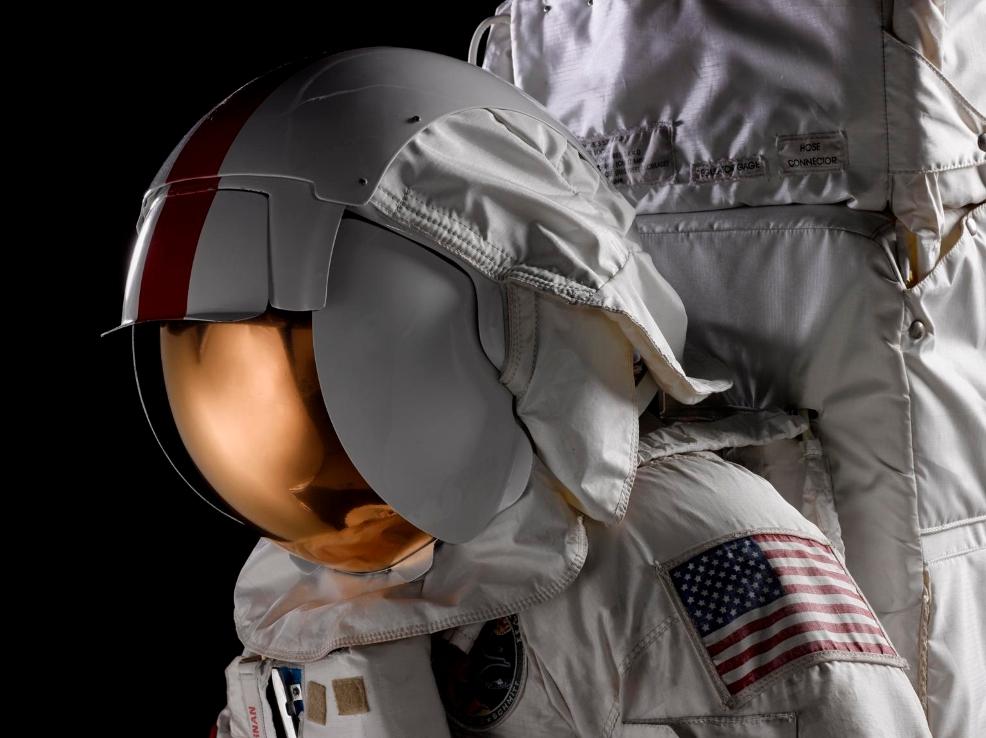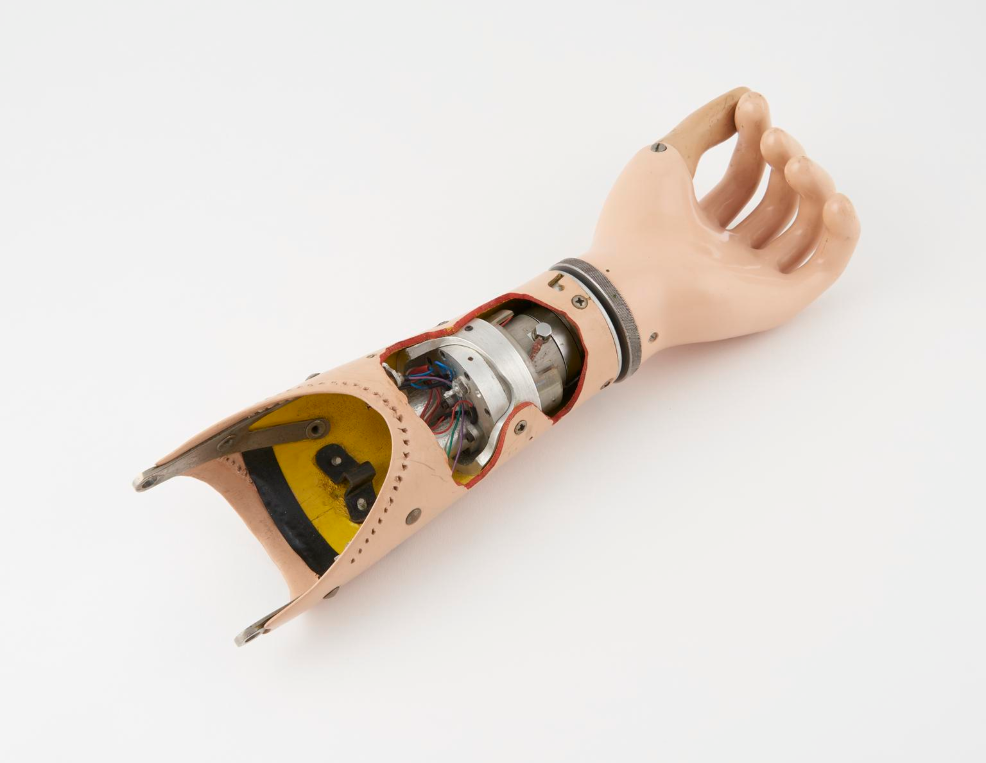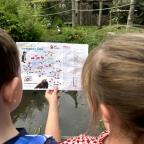
Science Museum opens major Science Fiction exhibition
EXPLORE NEW WORLDS IN THE SCIENCE MUSEUM’S BLOCKBUSTER EXHIBITION – SCIENCE FICTION – OPENING ON 6 OCTOBER
- A month today the Science Museum will open the most ambitious exhibition it’s ever staged: Science Fiction: Voyage to the Edge of Imagination, placing visitors at the heart of an interactive science fiction story;
- Through over 70 objects visitors will uncover fascinating connections between significant scientific innovations and celebrated science fiction works, brought together in the UK for the first time;
- Science Fiction has been designed by BAFTA and Academy award-winning creative studio Framestore who have created an immersive experience inspired by an alien spaceship, featuring an AI Guide and new alien language created exclusively for the exhibition;
- An accompanying science fiction themed live events series will include a special Lates, Astronights, panel discussions and music performances;
- As part of Lates the museum will host the Arthur C. Clarke Award on 26 October, celebrating the best in science fiction writing;
- The Science Museum is running a science fiction writing competition in partnership with Hodder & Stoughton – Science Fiction Debuts;
- An accompanying book, edited by exhibition curator Glyn Morgan, will be published to mark the exhibition opening.
Science Fiction: Voyage to the Edge of Imagination
6 October 2022 – 4 May 2023
Press preview: Wednesday 5 October 2022
Tickets available: sciencemuseum.org.uk/science-fiction
On 6 October, the Science Museum will open its most ambitious exhibition yet. Science Fiction: Voyage to the Edge of Imagination will place visitors at the heart of an interactive science fiction story which is filled with objects that explore how scientists and science fiction creators have inspired each other through innovation and imagination
Science fiction invites us to boldly go and explore strange new worlds and visitors will embark on an adventure through the cosmos aboard an extra-terrestrial spaceship accompanied by an AI guide, touch down on an unexplored world and gaze over planet Earth. The immersive experience, featuring a specially-developed alien language, is designed by award-winning creative studio, Framestore, and curated by the Science Museum Group.
Science Fiction uncovers fascinating connections between significant scientific innovations and celebrated science fiction works through over 70 objects, brought together in the UK for the first time. On display in the exhibition will be classic literature that imagined and inspired new understandings of the world around us, incredible set-pieces and props from iconic films and TV that envisioned new forms of life and other worlds – from Star Trek’s U.S.S. Enterprise, to the Daleks from Doctor Who and a Darth Vader helmet created for Star Wars: Episode V - The Empire Strikes Back – and contemporary artworks from across the globe that explore alternative futures for humanity.
 Image of Apollo 17 A7LB Lunar Extravehicular Mobility Unit Space Suit
Image of Apollo 17 A7LB Lunar Extravehicular Mobility Unit Space Suit
Sir Ian Blatchford, Director and Chief Executive of the Science Museum Group, said: ‘Science fiction invites us all to be explorers, venturing across time and space while reflecting on the deepest existential question there is – what makes us human? Our ambitious exhibition is unlike any other and I cannot wait for visitors to join us on this immersive and interactive journey through the extraordinary worlds of science fiction and scientific discovery.’
Dr Glyn Morgan, Lead Curator for the exhibition, said: ‘Science fiction offers us the chance to observe our own planet and consider our impact upon it. Visitors will see bright futures the genre has imagined and be confronted by some of the biggest threats to our existence – climate change, ecological devastation and nuclear war – as we invite them to consider how often-dystopian imaginings could give us the intellectual and emotional tools to imagine and create more utopian futures.’
Once inside the exhibition visitors will explore the vast Exploration Deck of the spaceship, filled with iconic items that the AI Guide has identified from science and science fiction that delve into our human drive to journey beyond our world. Whether through the technologies we imagine and create to take us there, including a scale model of a radio telescope used by scientists at SETI in their attempts to detect intelligent life, a model of a Saturn V rocket and a replica of the Apollo 17 Space Suit worn by Gene Cernan, the last man on the moon, or literary and cinematic musings on space travel and the other intelligent civilisations we might find, from Daleks to Darth Vader and an alien from Close Encounters of the Third Kind. Visitors will also see a first edition of Jules Verne’s From the Earth to the Moon, a model of the U.S.S. Enterprise from Star Trek signed by Nichelle Nicols and George Takei, a hypersleep chamber from Prometheus, a gold spacesuit from Sunshine and a Pan African Flag and Traveller Suit from artist Larry Achiampong’s Relic Traveller series.
 Image of Prosthetic Hand Powered by Carbon Dioxide 2 © Science Museum Group
Image of Prosthetic Hand Powered by Carbon Dioxide 2 © Science Museum Group
In the ship’s Bio Lab visitors will examine what it means to be human with objects that explore how science fiction imagines the evolution and replication of the human form through the depiction of cyborgs, AI and gene editing. Visitors will get to see titans of science fiction cinema from Frankenstein’s monster and Robby the Robot from Forbidden Planet to Darth Vader’s helmet created for Star Wars: Episode V – The Empire Strikes Back and Iron Man’s iconic armour. The Bio Lab will also explore how scientists have been inspired by the technological possibilities presented in science fiction, with incredible innovations including prosthetic arms developed by Open Bionics, the smallest ever pacemaker - the Medtronic Micra - and the DxtER medical diagnostic unit, winner of the XPrize, inspired by the medical tricorder used in Star Trek.
Visitors will then take part in an away mission, using a wormhole jumpgate to visit another world. Arriving on the planet, they will enter a strange subterranean world where they will encounter a beautiful swarm of bioluminescent creatures who interact through the intelligent communication of a collective hive mind, inspired by different depictions of aliens across science fiction.
Back on the Visualisation Deck visitors will be prompted to think about how science fiction reflects contemporary concerns and challenges. On display will be artworks including Passing Spring at the Ancient Dock by artist Yao Lu, a photocollage that initially appears to be in the style of a traditional Chinese landscape painting, with motifs of natural beauty, that on closer inspection is a landscape filled with waste and modern construction sites. Visitors will also see a poignant metal urn from Hiroshima, distorted by the heat of an atomic blast, displayed alongside a poster from the original Godzilla, highlighting how the development of nuclear weapons shaped post-war anxieties. Visitors will encounter objects from films that explore climate change, from a society depleted by water scarcity portrayed in Kenyan film Pumzi, to rising floodwaters engulfing Manhattan in the novel New York 2140, and the food shortages and poverty illustrated in the graphic novel version of Octavia Butler’s Parable of the Sower. Both science and science fiction also offer hope that we may overcome or mitigate global challenges and visitors will see a short film featuring scientists and futurists examining the importance of creativity in finding solutions to the grave threats we face.
Visitors will end their journey overlooking Earth through a huge window from the Observation Deck. Few have savoured this unique view from space and this extraordinary vista will provide visitors with a moment to reflect on our place in the universe and the boundless creativity and imagination that exists on the blue planet we call home.
The exhibition is designed by BAFTA and Academy award winning Creative Studio Framestore, and the design will play with ideas of how alien life forms might communicate with each other through innovative audio-visual design interventions in the space and will give visitors the sense of taking a journey off-world. An alien language developed specially for the exhibition will adorn the different sections of the ship, evoking the sensation of having left the familiar behind. The alien language – Bhaux – looks mechanical, as if the language was generated by a machine intelligence, has a unique vocabulary of a few thousand words, its own grammar structure and is unique to the exhibition. Bhaux phrases also feature in the soundscape for the exhibition and are woven throughout the design, enhancing the immersive feel of Science Fiction.
Science Fiction: Voyage to the Edge of Imagination is accompanied by a richly diverse events programme that explores the impact of science fiction literature, TV and film on the modern world. Live events range from a science fiction themed Lates, a popular after-hours public event for adults, where attendees can find out the winner of the Arthur C. Clarke Award, to expert panel discussions and live music performances, including a collaboration between The Radiophonic Workshop and Stealing Sheep, and a science fiction themed Astronights, our popular sleepovers for children.
Science fiction is an ever-evolving genre that seeks to make sense of our changing world. Recognising the importance of celebrating science fiction creators the Science Museum will be hosting the Arthur C. Clarke Award, which celebrates the best in science fiction writing, on 26 October at the museum’s science fiction Lates.
The Science Museum has also launched a new writing prize to champion science fiction writers - Science Fiction Debuts - in partnership with leading publisher Hodder & Stoughton, helping to nurture and support the science fiction creators of the future. Open for submissions until 30 September the prize will offer unpublished writers the chance to submit original science fiction works that will be reviewed by an expert judging panel of authors and industry figures. The winner of the prize will receive £4,000, alongside a full critique of their work, a six-month-long mentoring programme with Hodderscape Editorial Director Molly Powell, and introduction to three literary agents.
Accompanying the exhibition is a book, Science Fiction: Voyage to the Edge of Imagination, published on 29 September by Thames & Hudson. Edited by the exhibition’s lead curator Glyn Morgan, this compelling, fully illustrated companion book encompasses a range of themes explored in the exhibition – from people and machines, space travel, and aliens, to communication, threats, and anxiety, through interviews with an array of international science fiction authors, essays by experts, and reproductions of classic ephemera, graphics and objects.
The exhibition is curated by the Science Museum and designed by Framestore, the BAFTA and Academy Award winning creative studio. Science Fiction is generously supported by the Blavatnik Family Foundation (Major Funder) and Bridget and David Jacob (Supporters).














